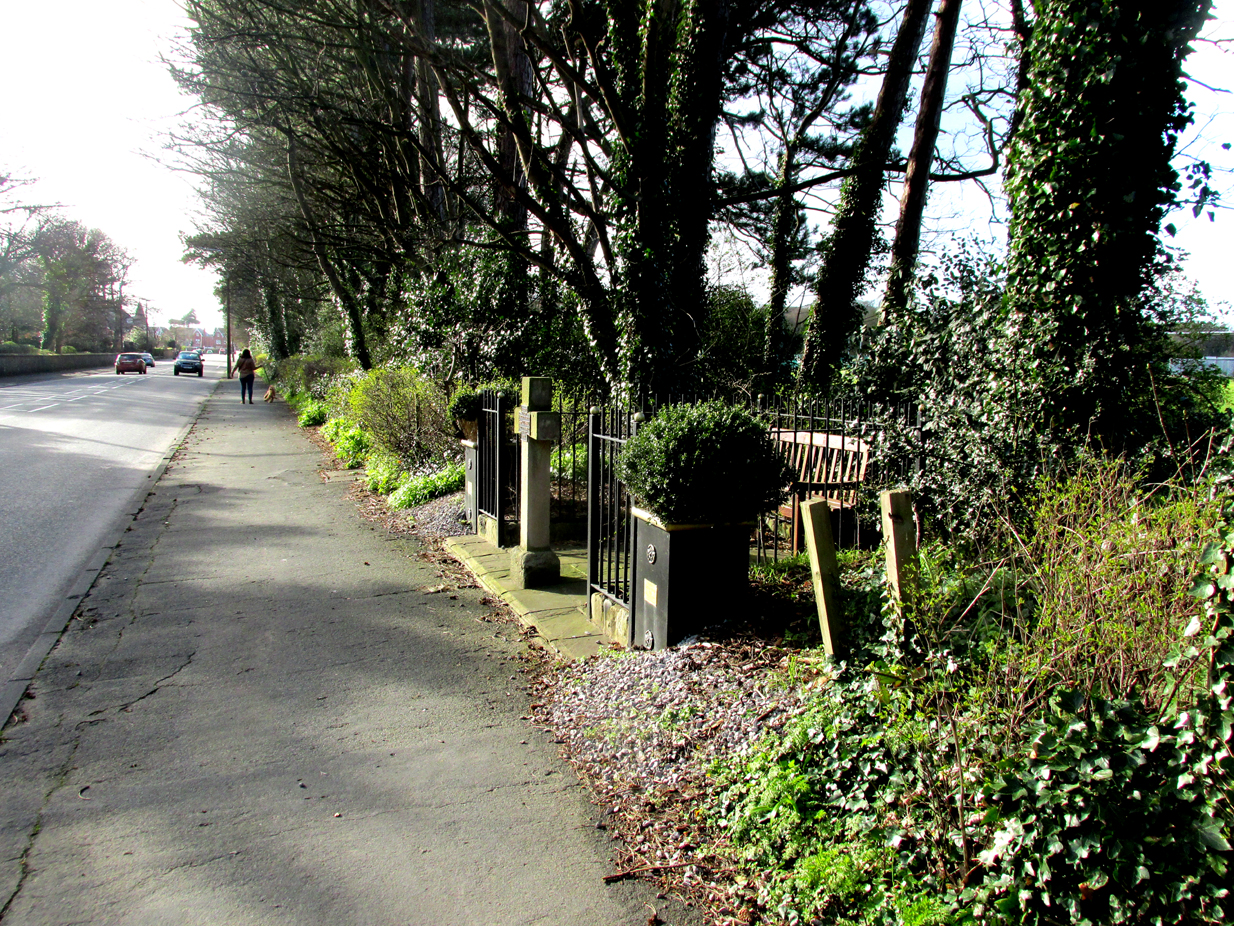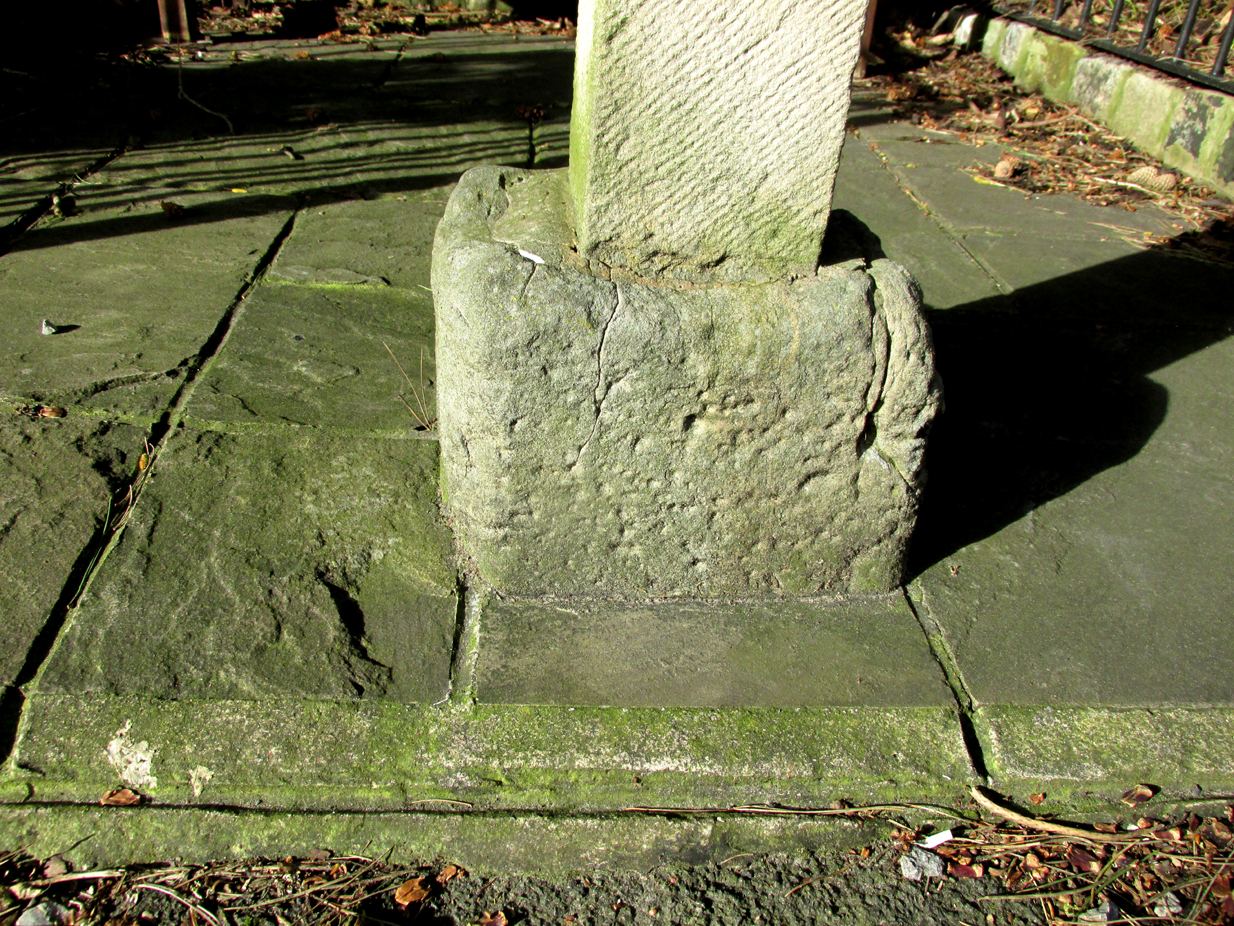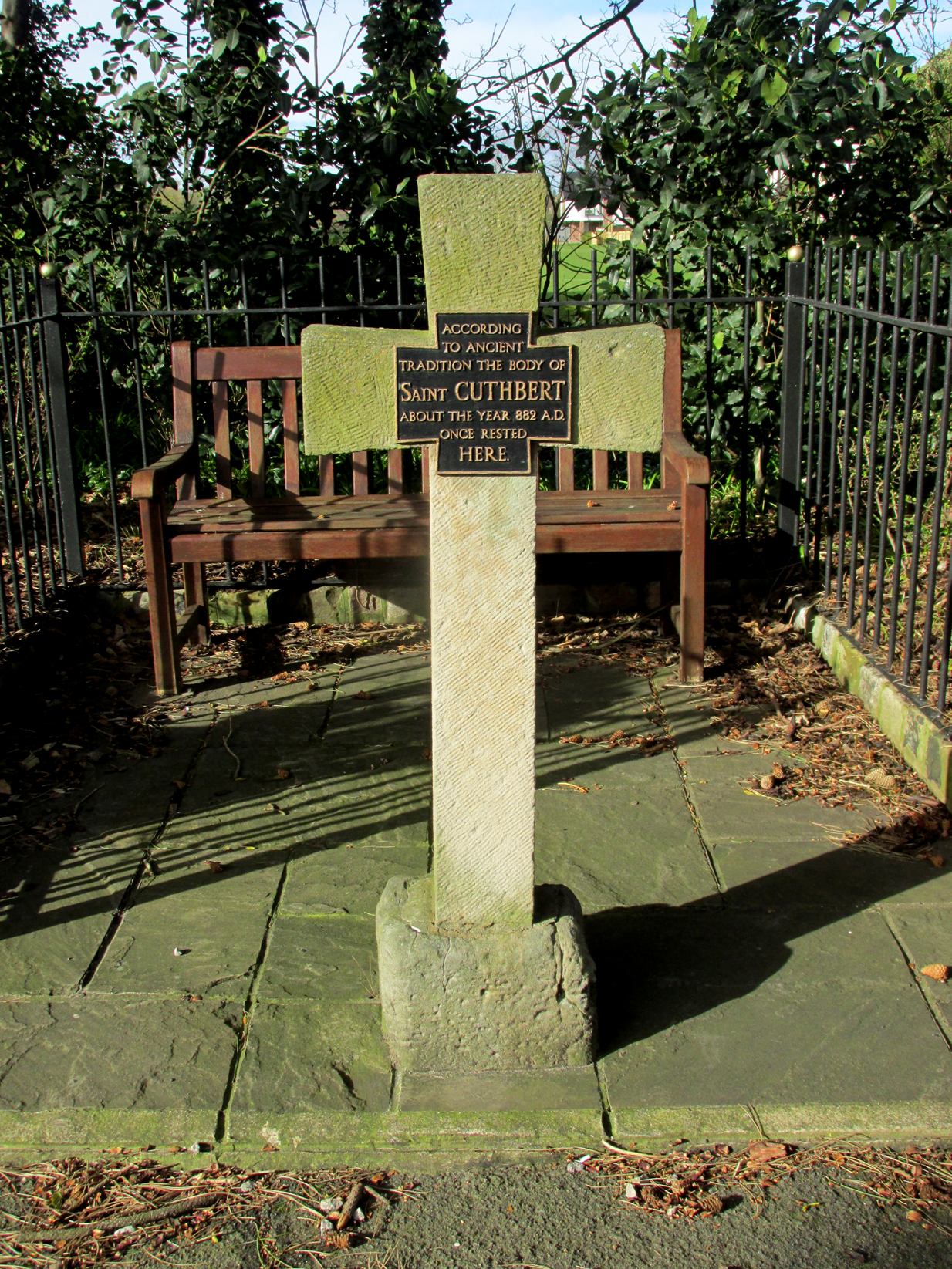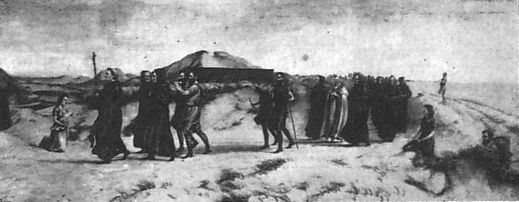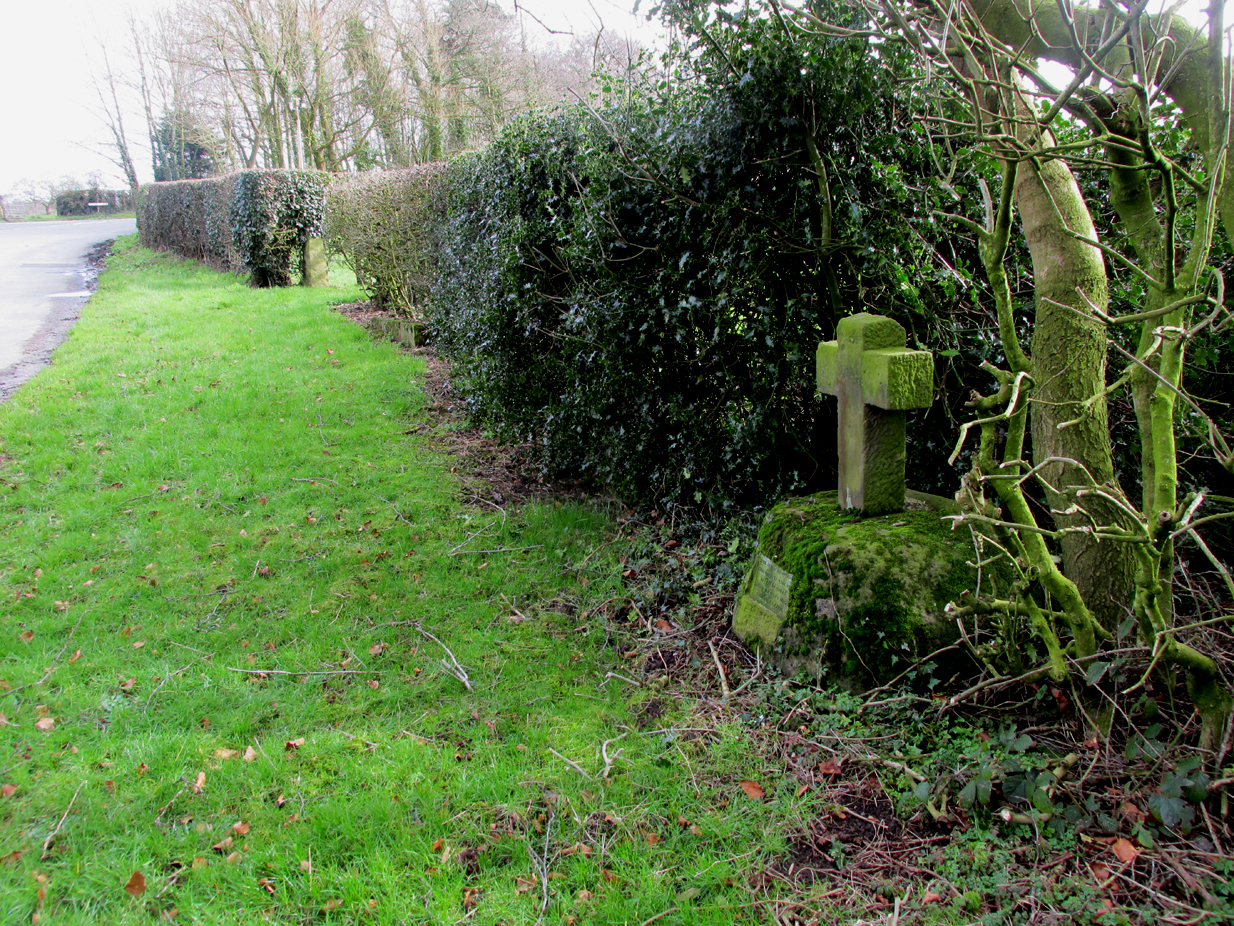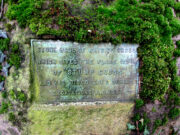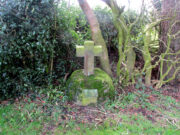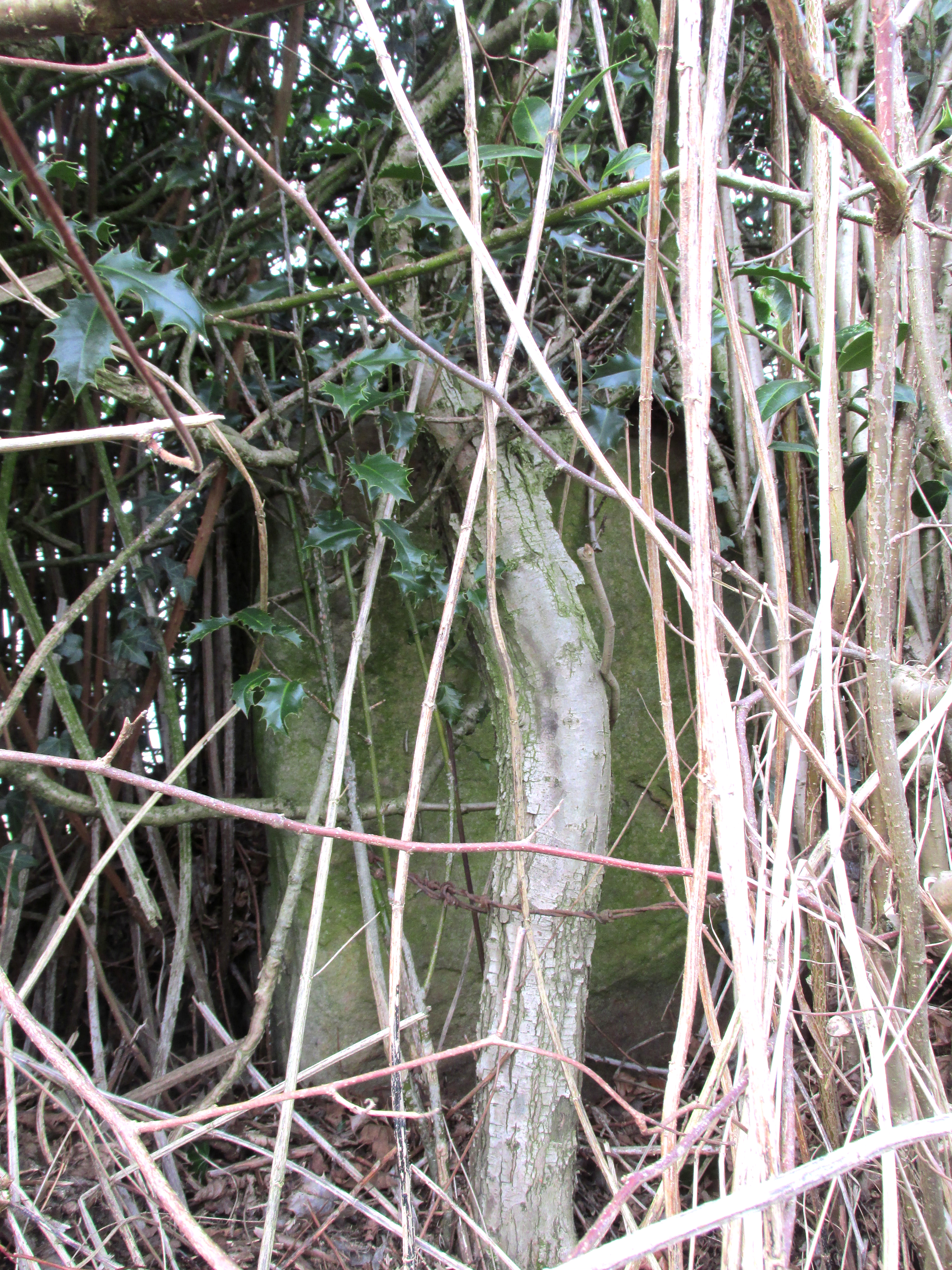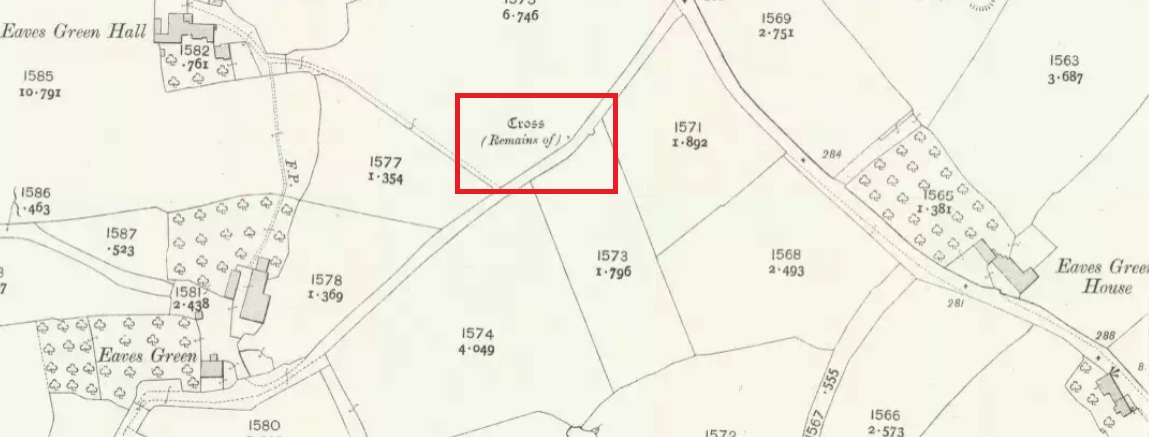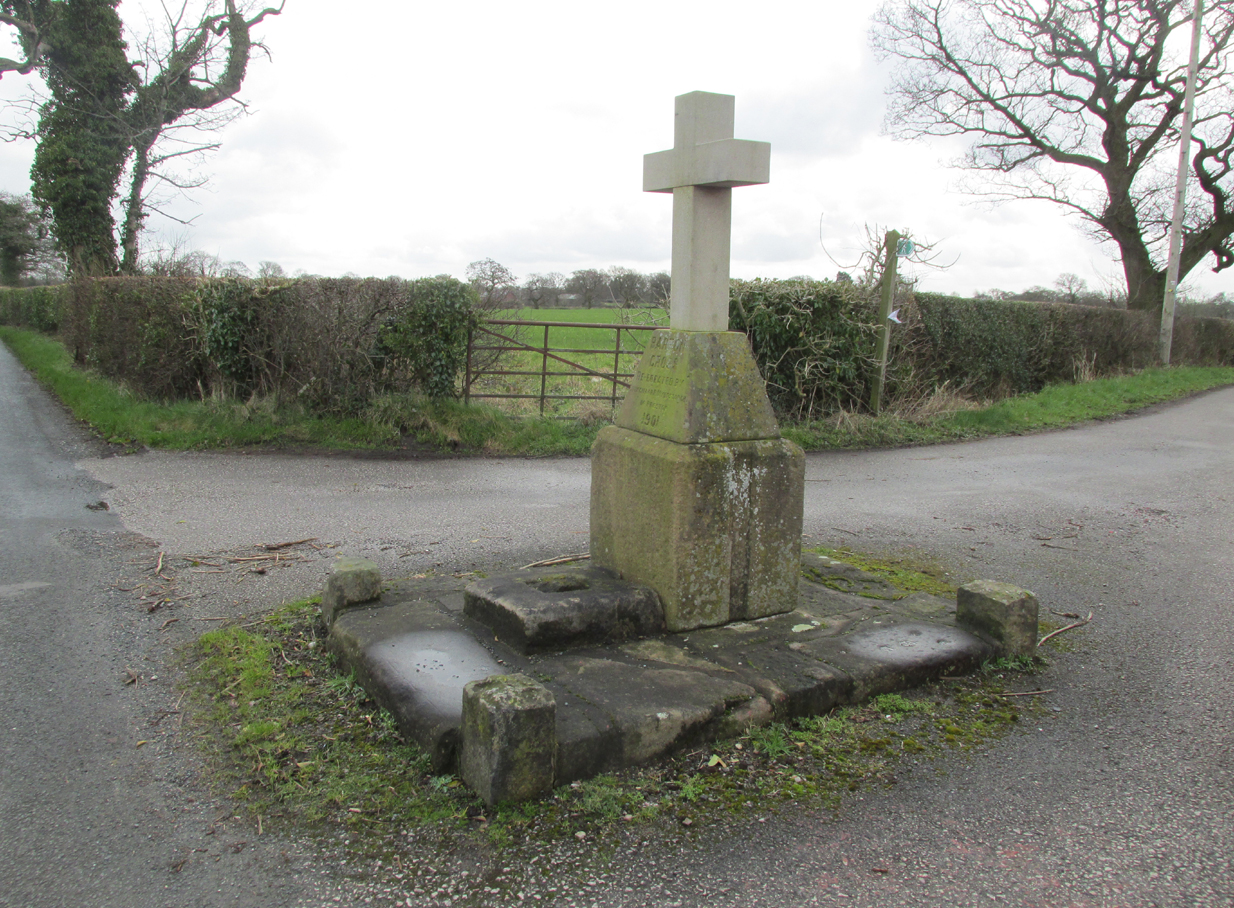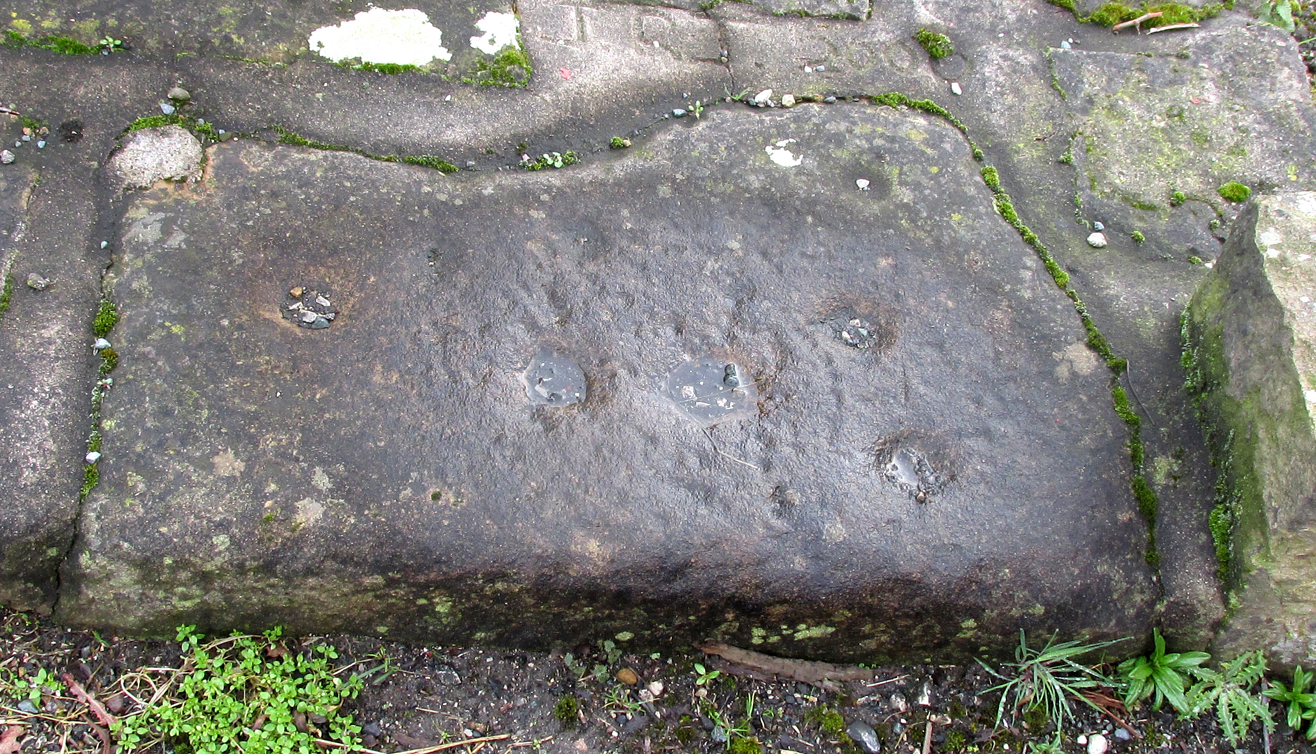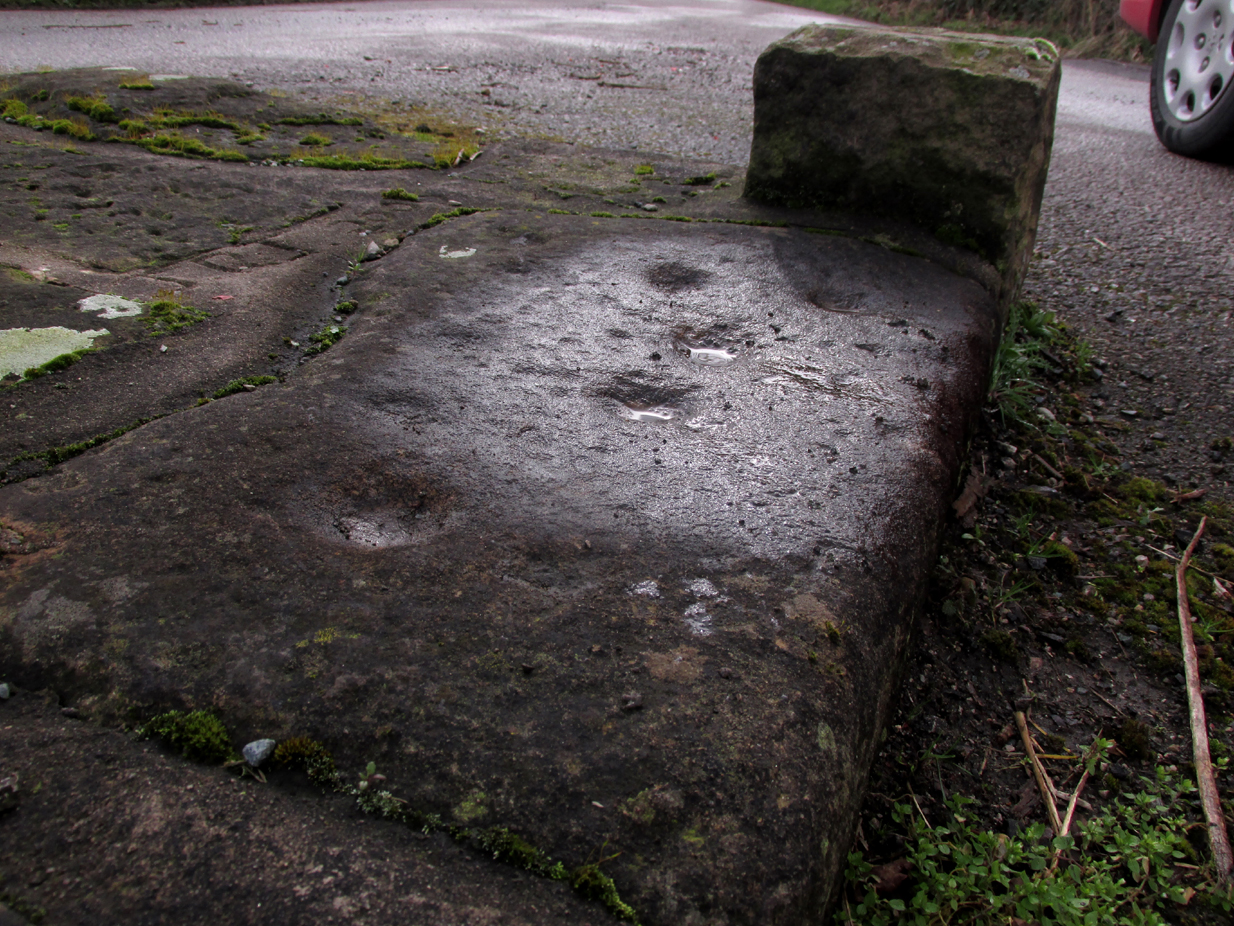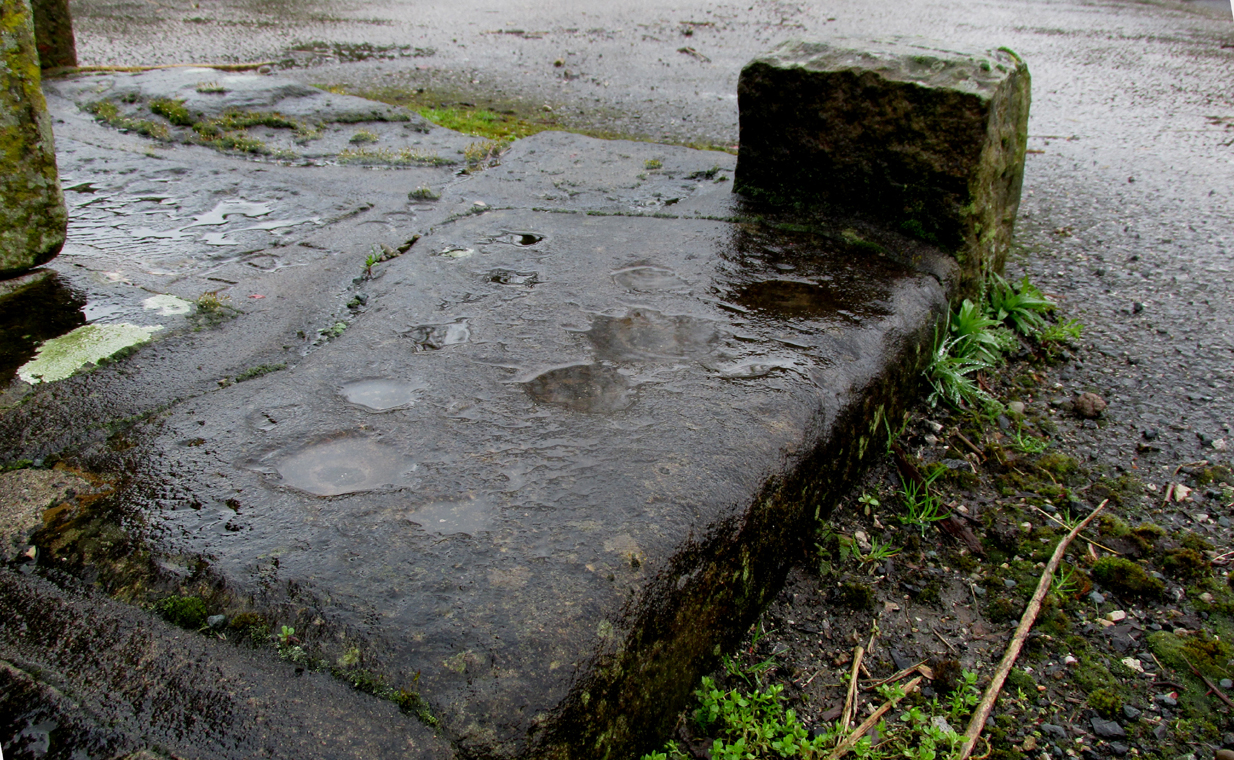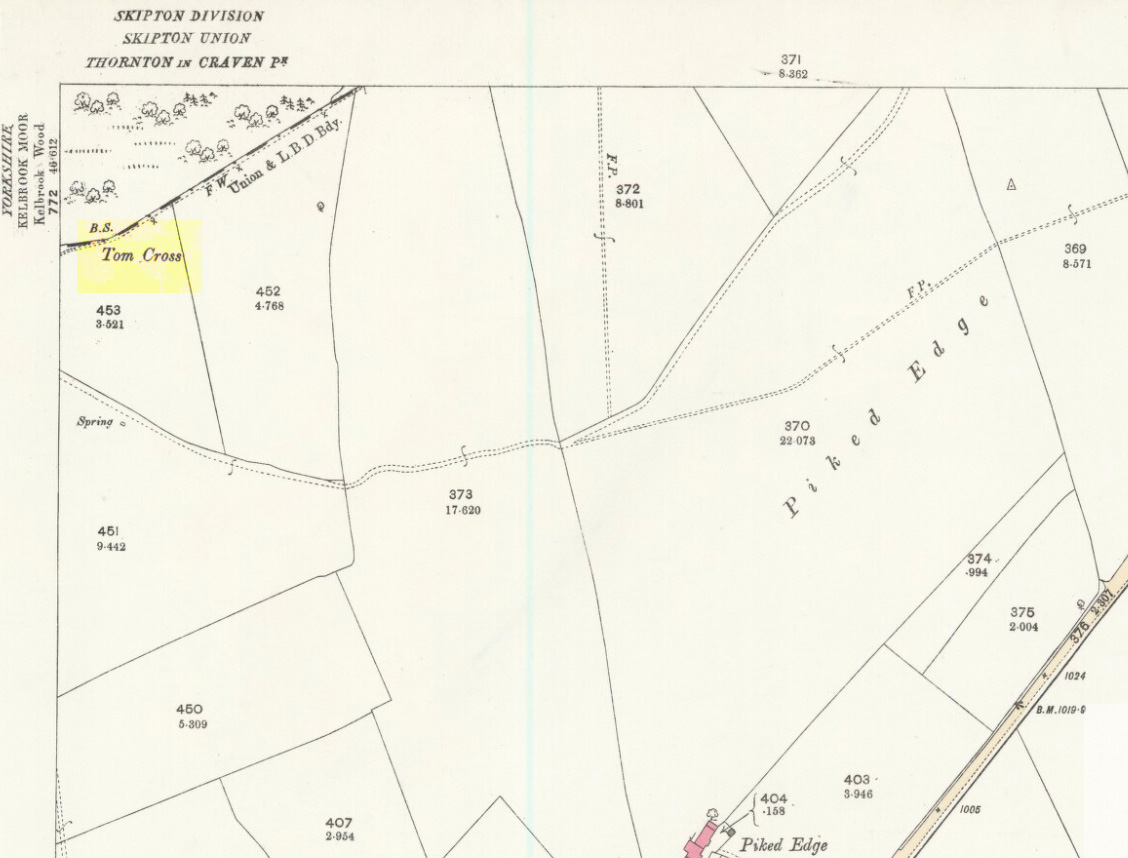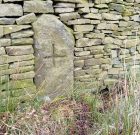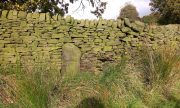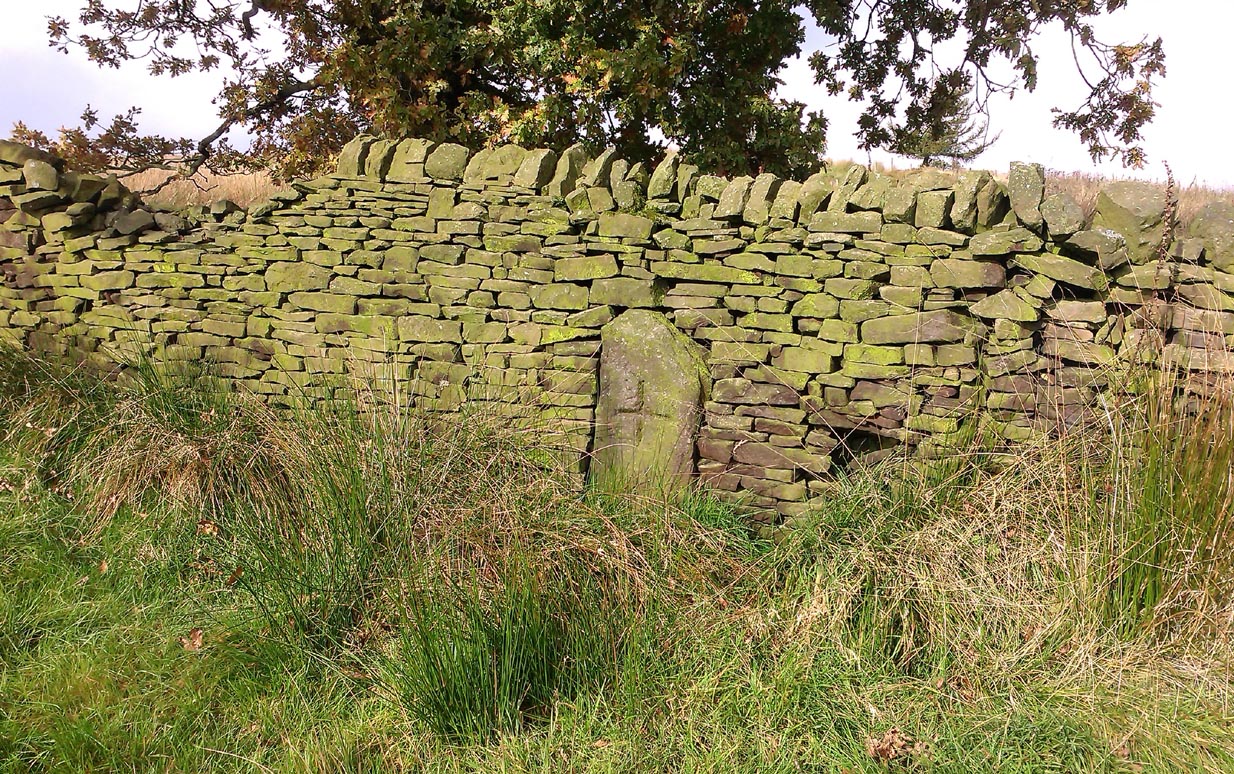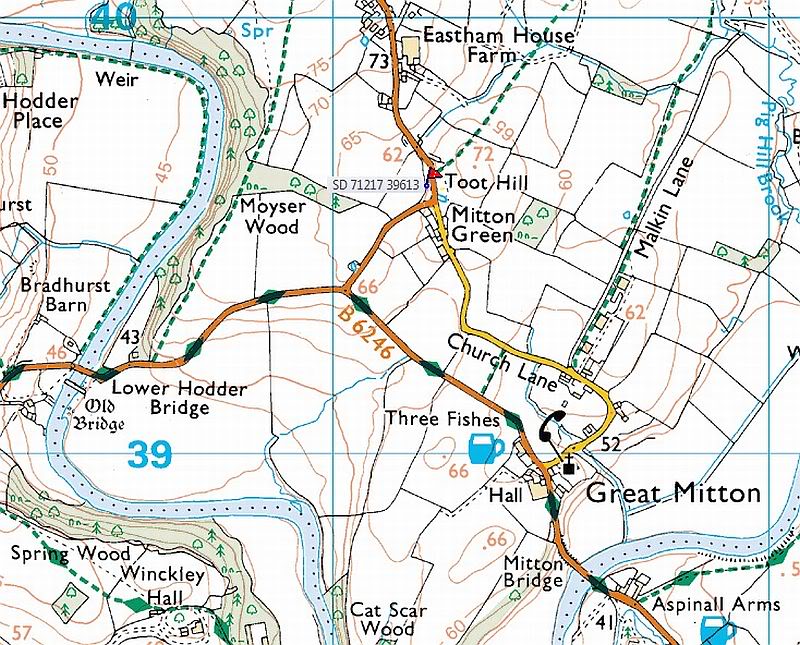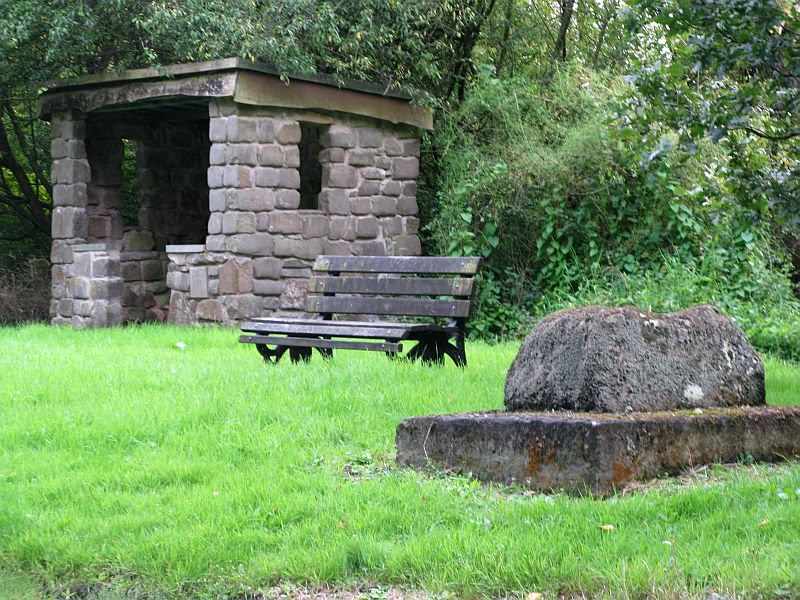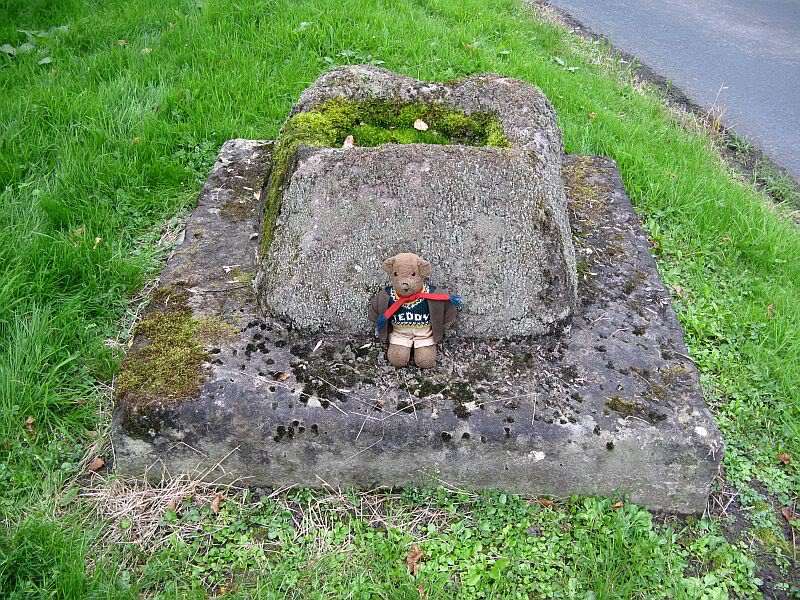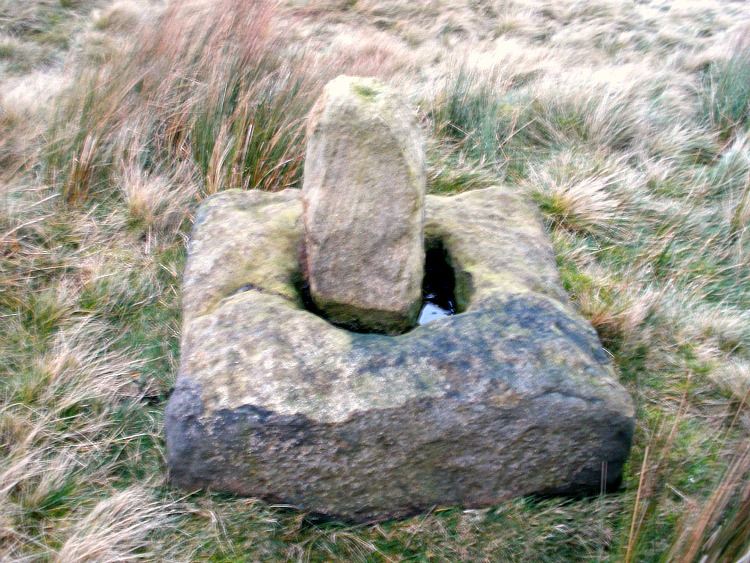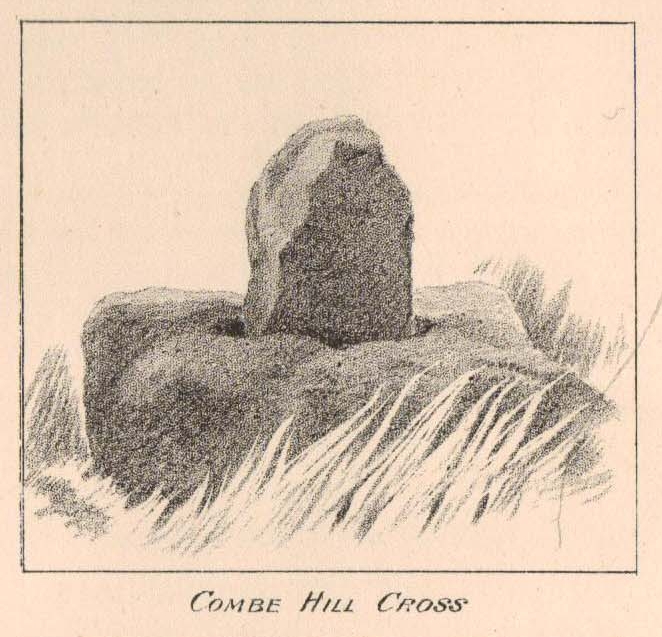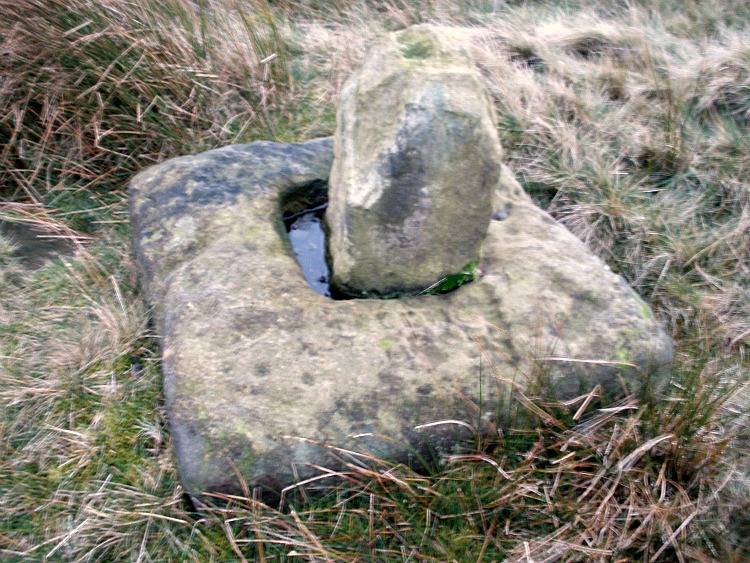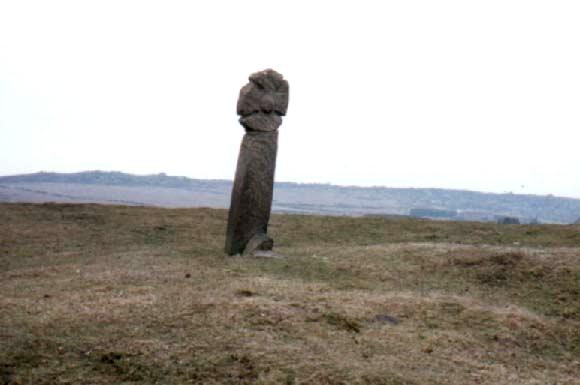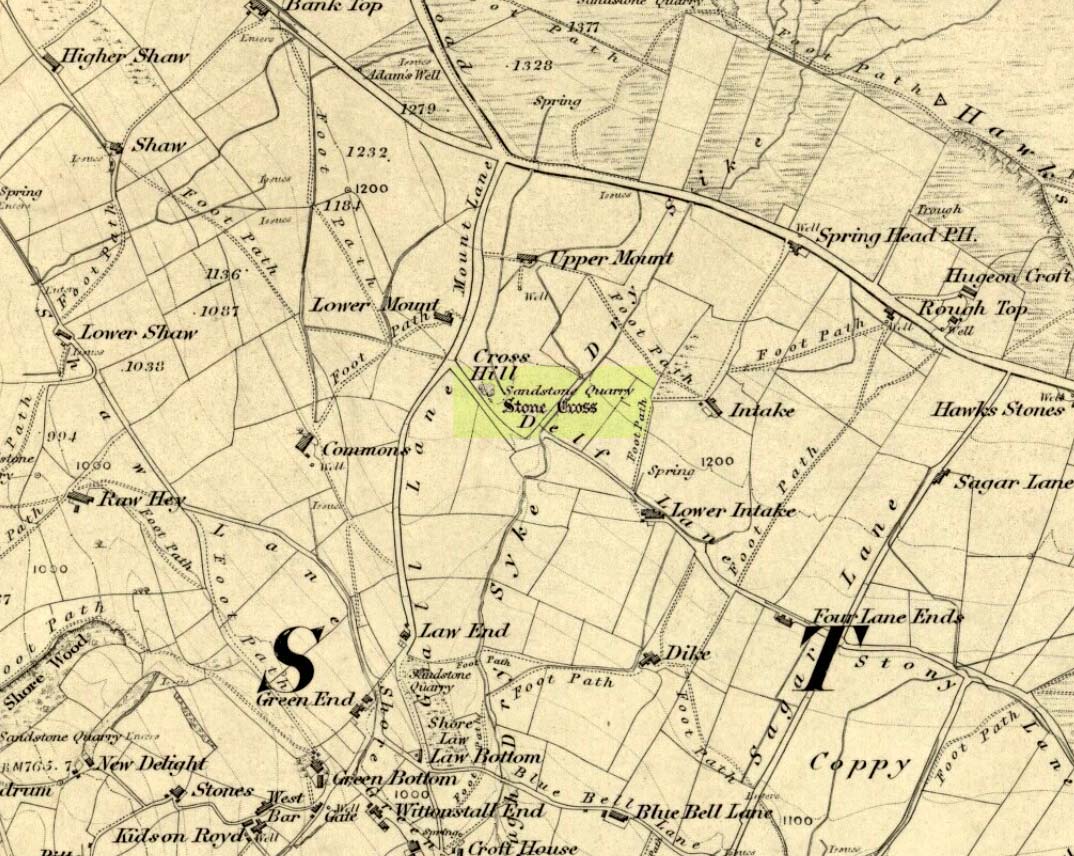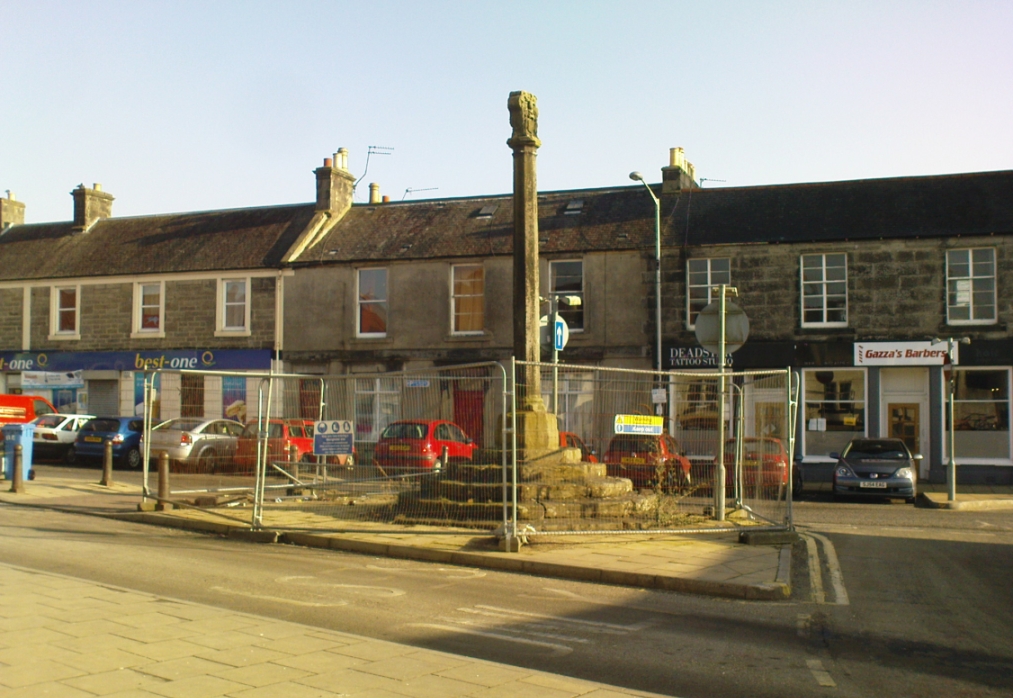Wayside Cross: OS Grid Reference – SD 53502 37332
Also Known as:
- Historic England Grade II Listed Monument 1073555
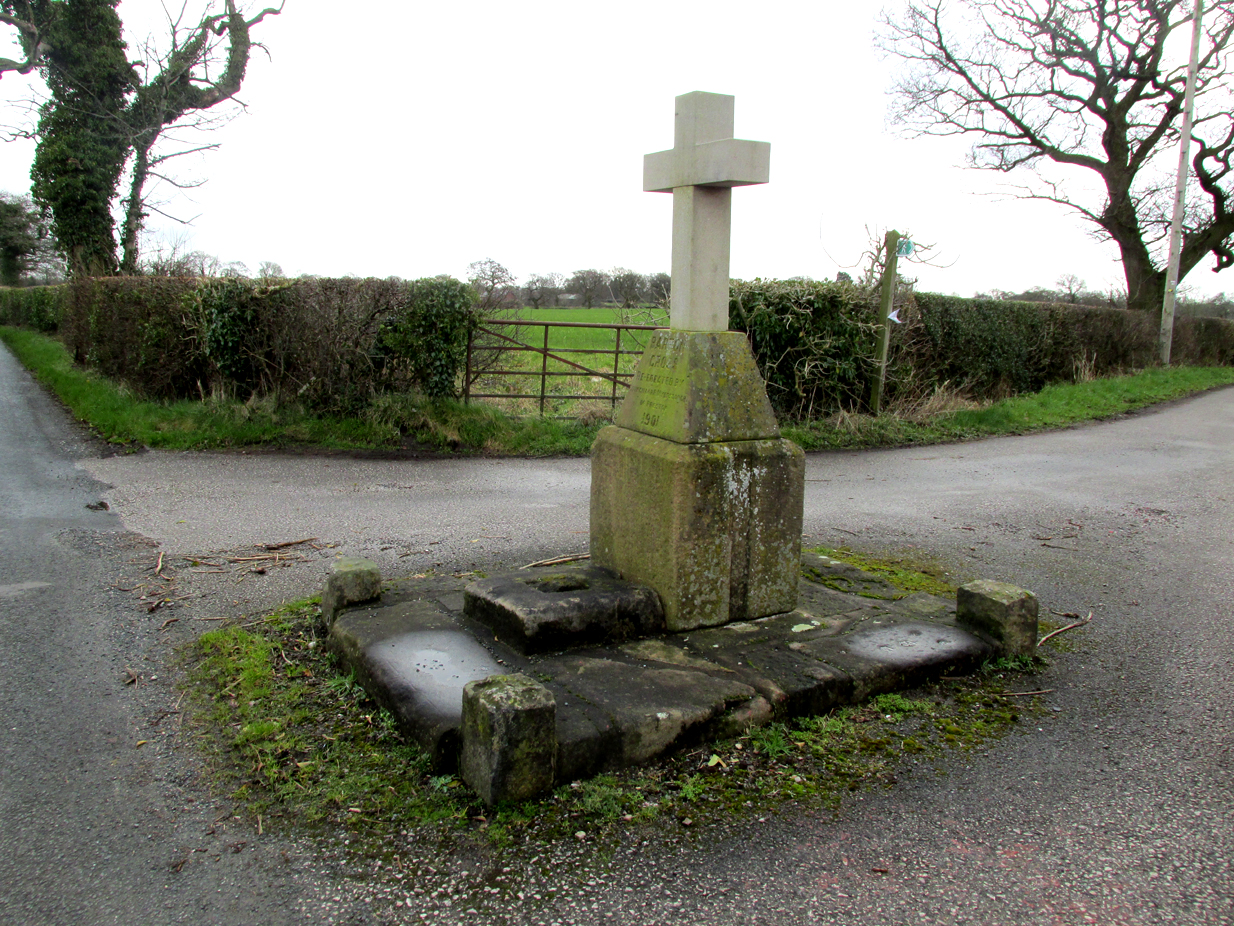
The cross is at the roadside on the south side of Barton Lane at the cross roads with the minor road between Cross House Farm and Barton House.
Archaeology and History
All that survives is the socketed base of a mediaeval cross on a raised paved platform with low raised square section pillars at each corner. Behind the original cross socket stands a large stone block (Described in the Historic England citation as “probably part of a cheese press“) surmounted by a pyramidal block upon which a modern carved stone cross has been placed.
Henry Taylor (1906) writes in his Ancient Crosses and Holy Wells of Lancashire:
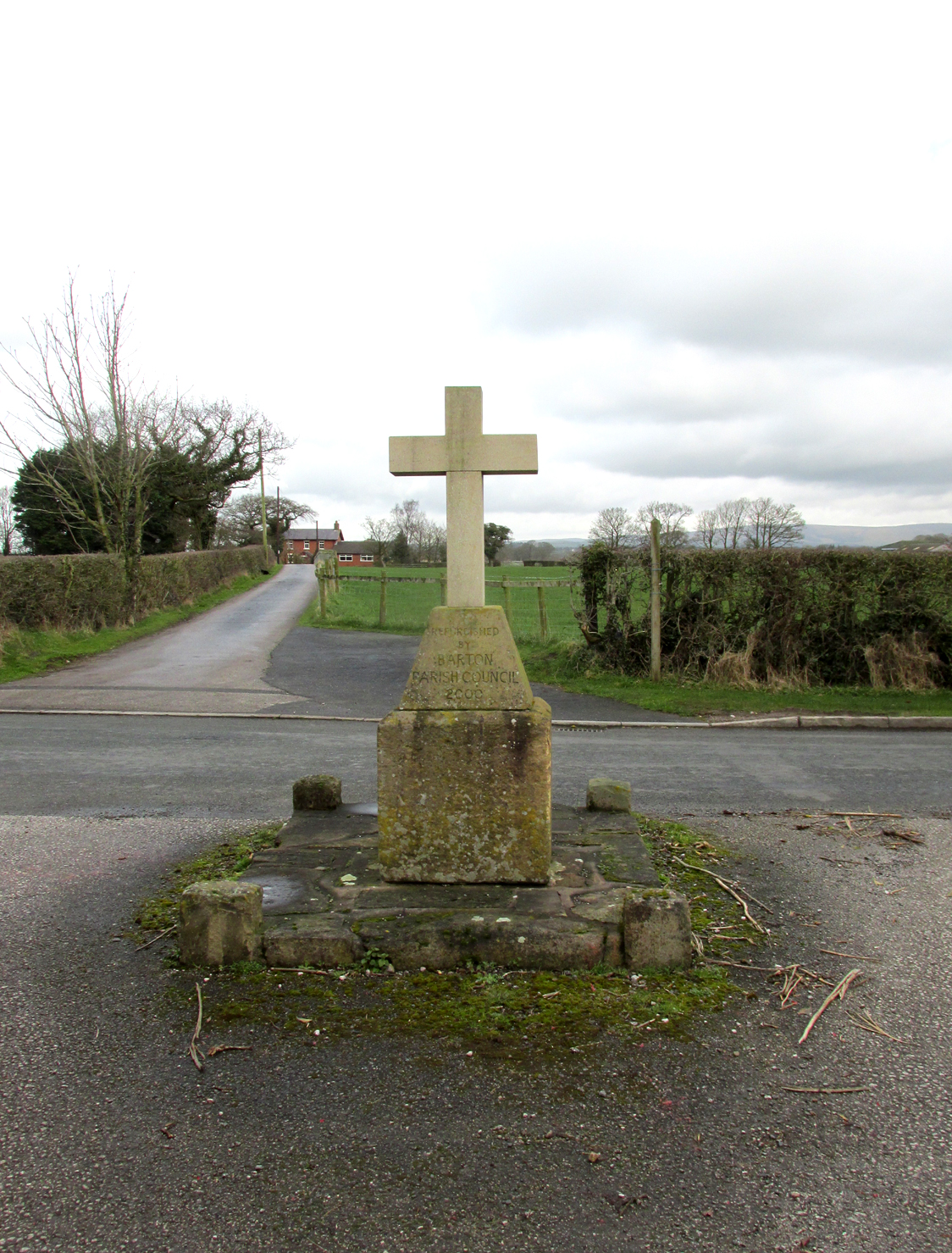
“Barton Cross. These words occur on the map in ancient Gothic letters in Barton Lane, one and a half miles in a westerly direction from Goosnargh Church, showing that in the year 1848 a complete cross stood here. The site is at the intersection of country lanes, and the map shows a small recess or lay-bye in which the cross was planted. Mr. Collinson [Reverend S.E. Collinson, Vicar of Broughton] writes that the base was thrown into a neighbouring pit at the time Daniel’s pedestal was buried. The base and part of the shaft of the Barton Cross have lately been restored to the old site. A new cross has been erected just behind by Mr. Myerscough.
Mr. Collinson tells me that in going through some of the old parish registers he found an entry referring to ‘Barton Christ’. He not unnaturally thinks that there must have been a figure on the Cross giving rise to the name. Nothing else would account for it. The neighbourhood of Barton (a pre-Norman settlement) is interesting and deserves a thorough investigation.”
The ‘Daniel’s pedestal’ refers to Daniels Cross, near Broughton, of which Taylor writes:
“The base was removed about sixty years ago. It is now in a neighbouring pit. The facts were obtained from an old man who helped at the destruction of this landmark.”
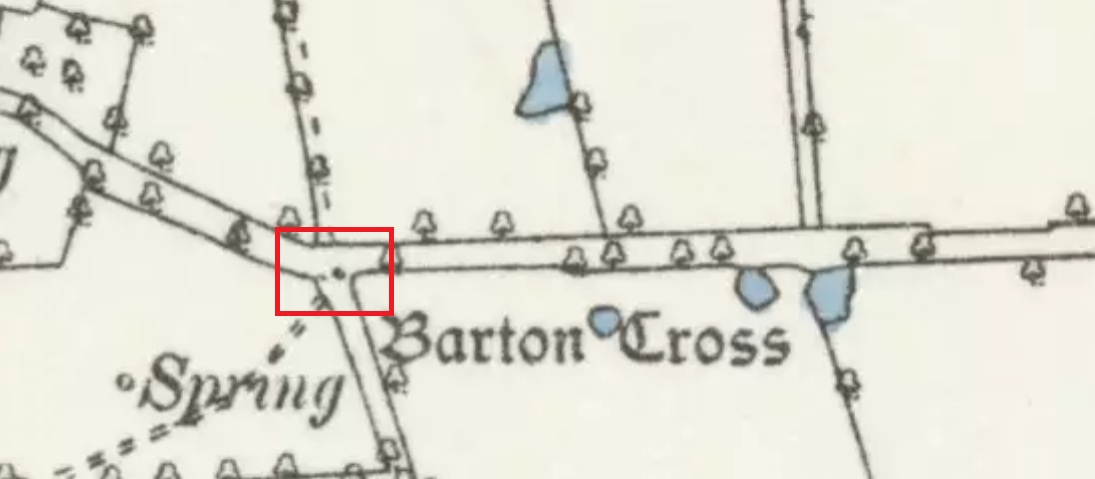
The pyramidal stone block upon which the modern cross stands is inscribed on the northern face: “Barton Cross re-erected by Councillor R. Myerscough of Preston 1901” while the southern face is inscribed: “Refurbished by Barton Parish council 2000“.
One of the paving stones that surround the cross has pre-historic cup markings on it, and is the subject of a separate site profile.
Bearing in mind what was written about the original cross having been ‘thrown into a neighbouring pit’, it may be worth probing the nearby marl pits to see whether the original could be found.
Reference:
- Taylor, Henry, The Ancient Crosses and Holy Wells of Lancashire, Manchester, Sherratt and Hughes, 1906
© Paul T. Hornby, The Northern Antiquarian 2017
